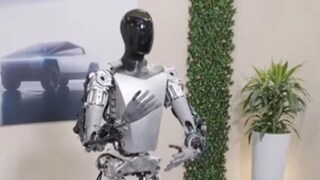Apple iPad Pro M5 Model Could Launch With Two Front Cameras: Know More

Amazon is reportedly making significant strides in its automation efforts by developing advanced artificial intelligence (AI) software to power humanoid robots, with the ambitious long-term goal of potentially replacing human delivery workers. This move signals a major escalation in the tech giant’s strategy to enhance efficiency and reduce costs across its vast logistics network.
According to recent reports, Amazon is not only focusing on the sophisticated AI that will drive these robots but is also establishing a dedicated testing facility, aptly named a “humanoid park", in San Francisco. This indoor obstacle course is designed to simulate real-world delivery scenarios, allowing Amazon to rigorously test the robots’ capabilities in navigating complex and unpredictable environments. The park reportedly includes elements like mock doorways, steps, and even a parked Rivian electric delivery van, aiming to mimic the challenges faced by human delivery personnel.
While Amazon is developing its own cutting-edge AI software, it plans to leverage hardware from other robotics companies for initial testing. The company is expected to trial various humanoid robots, including those from firms like Unitree Robotics (such as the Unitree G1 robot), to gather diverse data for training its AI models. The ultimate vision is for these humanoid robots to eventually hitch a ride in the back of Amazon’s growing fleet of Rivian electric vans, then emerge to deliver packages directly to customers’ doors.
This initiative is part of Amazon’s broader and accelerating push into automation, which already includes a vast array of robotic systems in its warehouses. The company has publicly highlighted how AI will infuse its stockroom operations, delivery processes, and massive fulfilment centres to accelerate package delivery. While the company has not yet made an official statement regarding the humanoid park or its specific plans for delivery robots, the development underscores Amazon’s confidence that advanced technology, particularly AI, is the future of e-commerce logistics.
The prospect of humanoid robots taking over delivery roles raises considerable discussion about the future of human employment in the logistics sector, even as Amazon emphasises that its existing warehouse robots are designed to assist human workers and improve safety. However, the explicit aim for “replacement" in the long term indicates a potentially transformative shift in the delivery industry, driven by the continuous pursuit of faster services and reduced operational expenses.
(With agency inputs)